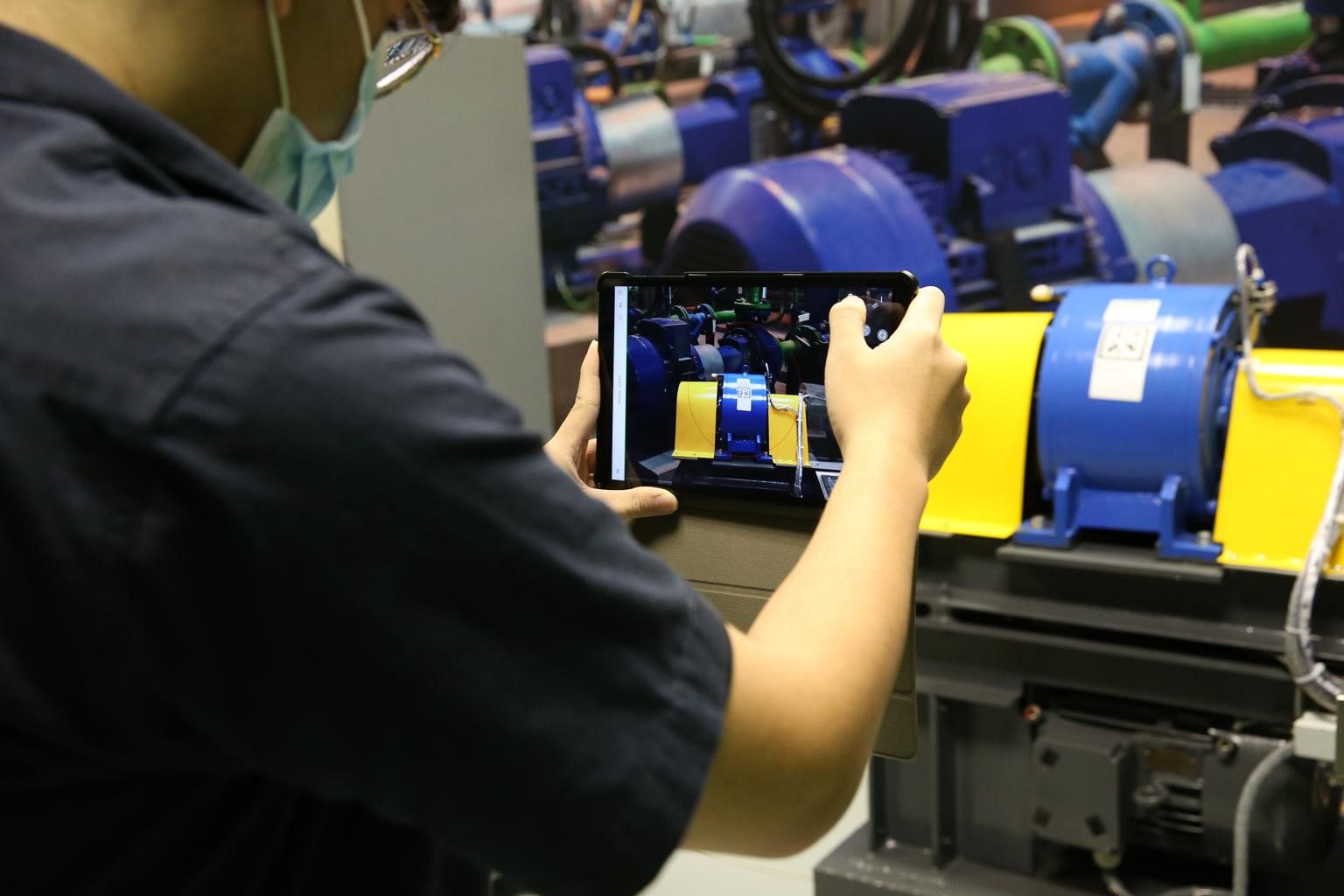New augmented reality centre for ITE East mechanical engineering students
Sign up now: Get ST's newsletters delivered to your inbox
Follow topic:
SINGAPORE - Mechanical engineering students from the Institute of Technical Education (ITE) College East can pick up new skills in areas such as augmented reality (AR), with the opening of a new facility on Nov 24.
The Predictive Maintenance Centre, in collaboration with Schneider Electric, will allow about 800 students to use AR to safely monitor real-time machine readings from remote locations.
Before this, students would manually insert probes to retrieve data while a machine is running, which could be dangerous.
Predictive maintenance tracks a machine's real-time performance, so maintenance sessions can be scheduled to prevent costly and unexpected breakdowns.
Students can also install an application on their mobile phones to use AR to aid their learning. If they have a photo of the machine they are learning about, the app will superimpose information about the equipment.
This can help students learn at their own pace, as they will be able to access information and guides about the machine visually, said mechanical engineering lecturer Chua Zhong Yang.
"Some students are afraid to ask questions while the lecturers are giving demonstrations. With this, they can participate and engage themselves easily," he added.
First-year Mechanical Technology Nitec student Lai Shi Hua, who was excited to use the lab for her learning, said it would give her an edge when she joins the workforce.
"Employers would want someone who knows about new technology and is proficient at it," she added.
The $240,000 lab is equipped with an Augmented Operator Advisor from Schneider Electric. The software can collect data readings from various sensors remotely and translate them into predictions on the health of a machine.
Alerts will be sent remotely to the maintenance crew if there are abnormal readings, making it safer and more efficient as the crew does not need to physically inspect the machine.

Students will be able to use augmented reality to safely monitor real-time machine readings from remote locations.
ST PHOTO: SAMUEL ANG
Though predictive maintenance is not new, adoption of the technology has been rapidly increasing in recent years. This year, the global predictive maintenance market was valued at $6.9 billion, up from $1.5 billion in 2016.
Mr Alfred Tan, director for the School of Engineering at ITE College East, said: "There is definitely a shift in mechanical engineering jobs from low-tech and manual to high-tech and automated, and we want to ensure that our students are well-equipped when they graduate to become the next generation of engineers."
Mr Yoon Young Kim, cluster president for Singapore, Malaysia and Brunei at Schneider Electric, said: "This partnership with ITE is our commitment to training the next generation of engineers who will become the backbone of this smart nation."
There are also plans for lecturers from the other two ITE colleges to be trained in the technology, so that more mechanical engineering students can benefit.

